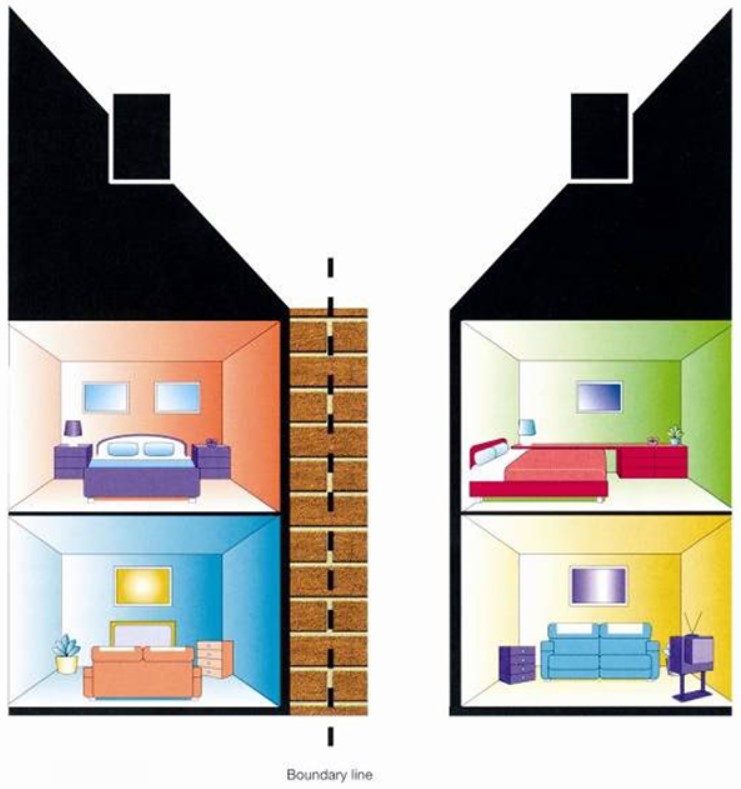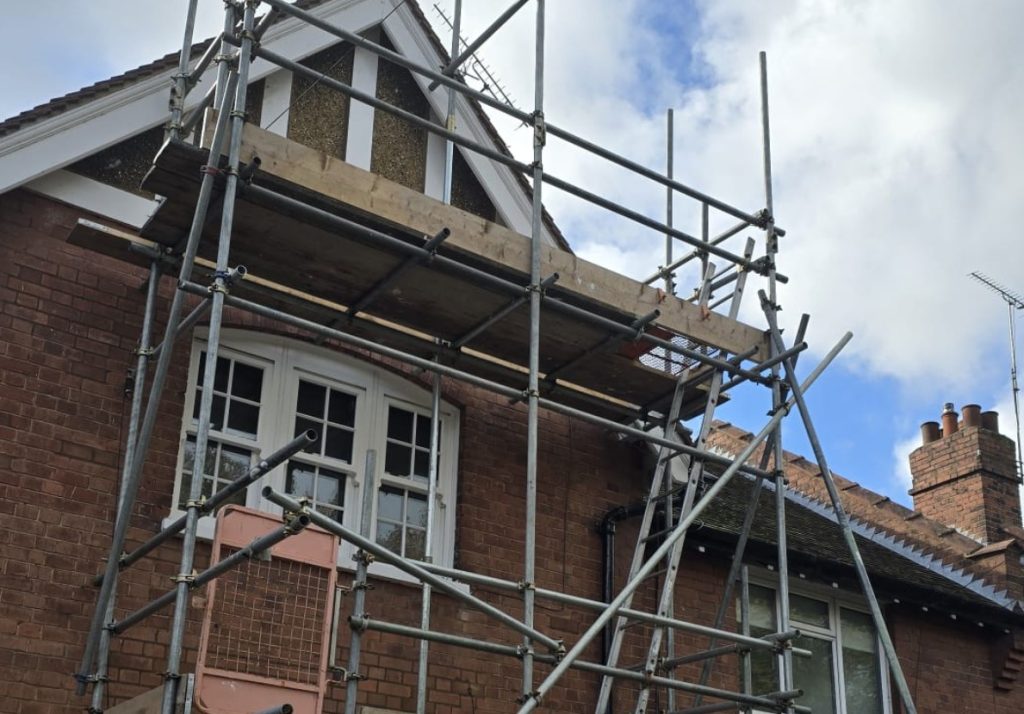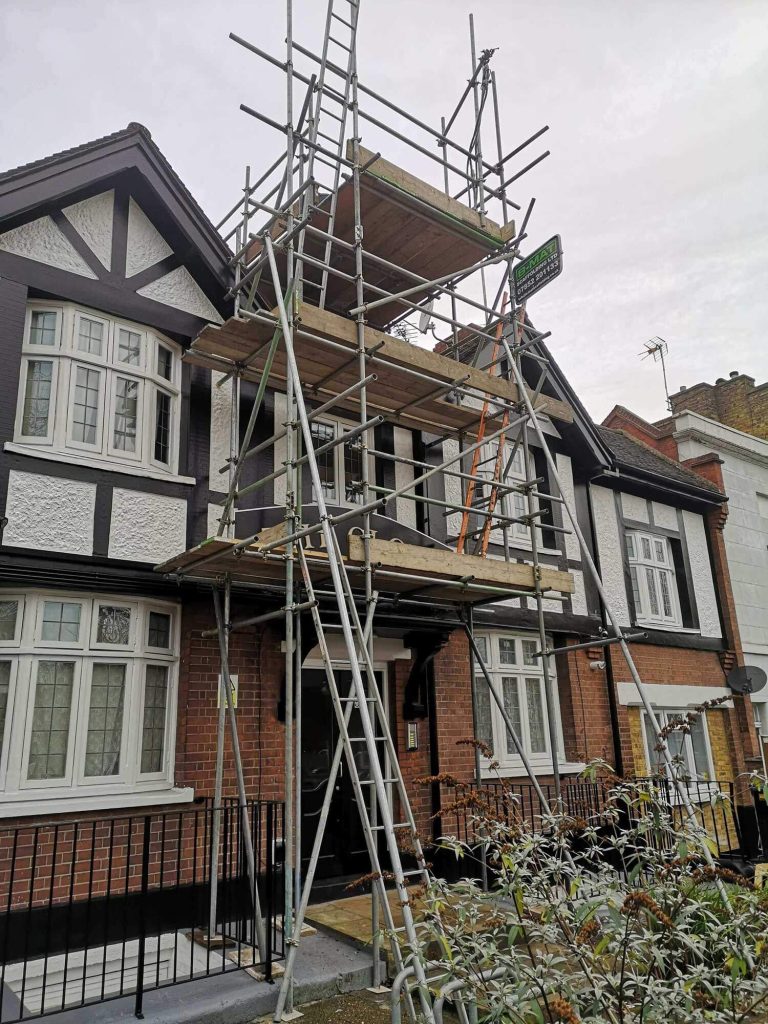If you’re planning construction work—or even some major repairs—you may need to erect scaffolding that extends onto a neighbour’s property. But what happens when your neighbour or the property owner isn’t on board? Can they legally refuse access to their land?
Navigating these situations can be tricky without a good understanding of the law, practical solutions, and your neighbour’s rights. This guide will walk you through the answers, highlight legal frameworks for erecting scaffolding (like the Party Wall Act 1996) and offer suggestions on negotiating access while maintaining good relationships.
Understanding the Party Wall Act 1996

The Party Wall Act 1996 is key legislation in the UK when it comes to construction work. While it doesn’t directly cover scaffolding access, it plays a crucial role when work impacts shared walls, boundaries, or neighbouring properties.
When does the Act apply?
- If your project involves building on or near a boundary with a neighbour.
- For repairs, maintenance, or changes affecting shared structures.
If your work falls under this Act, it’s a legal requirement to serve a Party Wall Notice. This notice formally informs your neighbour of the planned work and ensures transparent communication. While the Act itself doesn’t guarantee scaffolding access, it establishes a foundation for respectful, legal discussions.
However, explicit permission is usually required to access your neighbour’s land—even for scaffolding. Without permission, you could find yourself in a tough spot.
Can a neighbour legally refuse access for scaffolding?

Yes, your neighbour has the right to refuse access to their property. UK law does not automatically grant you permission to set up scaffolding on adjacent land—except in emergencies. There are valid reasons a neighbour might refuse, including:
- Privacy concerns—they may worry about their privacy being disrupted.
- Safety fears—scaffolding can feel risky if not properly managed.
- Potential property damage—they might worry about wear and tear caused by equipment or workers.
- Timeline disputes—longer projects may disrupt their daily lives.
If your neighbour refuses, don’t panic. There are steps you can take to resolve the issue amicably—or legally if necessary.
How to negotiate access with your neighbour

Most disagreements about scaffolding can be resolved with conversation. Here are some tips for approaching your neighbour professionally and building trust.
1. Start early and communicate clearly
Don’t wait until the last minute to notify your neighbour about scaffolding. Explain exactly why and when you’ll need access, and provide realistic timelines.
2. Address their concerns
If safety or property damage is an issue, outline the precautions you’ve put in place. For example, tell them about risk assessments or insurance coverage from qualified scaffolding experts.
3. Put it in writing
Having a clear, written agreement that covers access rights, timelines, and responsibilities can help avoid misunderstandings.
4. Offer compensation
If their property will be inconvenienced, consider offering fair compensation. This could include paying for minor repairs, cleaning services, or even a goodwill payment for disruption.
Handling these discussions kindly and respectfully often makes a huge difference.
What to do if access is refused (Neighbouring Land Act 1992)

If negotiations fail and your neighbour refuses access, what’s next?
You may be able to legally obtain an Access Order, which is governed by the Access to Neighbouring Land Act 1992. Here’s what you need to know about the process.
Steps to obtaining an Access Order
- Serve a formal notice—Outline why you need access and detail the specific work.
- Apply to your local court—You’ll need to prove that the work is essential (e.g., for maintenance or repairs).
- Present your case—Provide evidence that the scaffolding won’t harm your neighbour’s property, and offer solutions to mitigate disruptions.
Court-associated costs
Applying for an Access Order comes with a price tag. Costs could include:
- Legal fees (£1,000–£5,000 depending on complexity).
- Surveyor fees (£500–£1,500).
- Court fees (£250–£500).
- Compensation for any inconvenience to your neighbour.
Budgeting £5,000–£7,000 for the legal costs and associated expenses is advisable.
Bear in mind, Access Orders are commonly considered a last resort as they’re time-consuming and expensive. They should only be pursued if the scaffolding work is essential.
Exceptions for emergency situations

If the work is urgent—like fixing a roof to prevent structural damage—you may have the right to require access to your neighbour’s property without prior permission. However, this exception is strictly limited to emergency repairs.
Even in emergencies, you must act responsibly. Ensure the scaffolding is installed by qualified scaffolding professionals, and minimise disruption as much as possible.
Can compensation be requested by neighbours?
Yes, neighbours are entitled to compensation for any damage or disruption caused by scaffolding access. This could include:
- Repairs to property or landscaping.
- Loss of privacy or access to their own space.
- General inconvenience.
Discussing compensation upfront is a great way to build goodwill and avoid escalations.
Keeping safety and legal compliance in mind
When it comes to scaffolding, safety must always come first. Here are three essential points to consider:
- Hire scaffolding experts—Professional installation ensures the scaffolding complies with UK safety standards.
- Secure adequate insurance—Protect yourself and your neighbour from potential risks during scaffolding work.
- Conduct risk assessments—Identify and mitigate any potential hazards before work begins.
By prioritising safety and compliance, you establish credibility and reassure your neighbours that their concerns are being taken seriously.
FAQs
Do I have a legal right to access my neighbour’s property for scaffolding?
No, you cannot gain access without your neighbour’s explicit permission. You’ll need to negotiate or apply for an Access Order.
Can my neighbour request compensation for allowing scaffolding?
Yes, if they permit access they can also request compensation for damages or inconvenience caused by scaffolding access.
Does scaffolding require planning permission if my neighbour is compliant?
Yes, scaffolding typically requires planning permission from your local council. Be sure to check before beginning work.
What can I do if my neighbour refuses access and it’s not an emergency?
You may need to take legal action and apply for an Access Order as a last resort. It’s advisable to consult a legal professional before proceeding.
How quickly can I secure access through the courts?
The time frame varies, but it typically takes 1–3 months to secure an Access Order.
Can my neighbour refuse access for aesthetic improvements?
Yes, Access Orders are granted only for essential repairs, basic preservation works or maintenance, not for aesthetic changes or voluntary improvements.
Can scaffolding be placed in emergencies without permission?
Yes, in emergencies (e.g., to prevent damage), scaffolding can be erected without prior consent. However, you must act responsibly and minimise intrusion.
Can my neighbour erect scaffolding alongside my own?
Yes, your neighbour is within their rights to erect scaffolding on their own property, as long as it doesn’t interfere with your property or access.
Wrapping up
Accessing a neighbour’s property for scaffolding work may feel like a complex balancing act, but with the right approach, most issues can be resolved amicably. Be informed, communicate clearly, and explore legal options only if absolutely necessary.
Need professional advice or assistance with scaffolding installations?
Contact B-Mat Scaffolding today. Our team of scaffolding experts will guide you every step of the way, ensuring your project is safe, smooth, and hassle-free.


